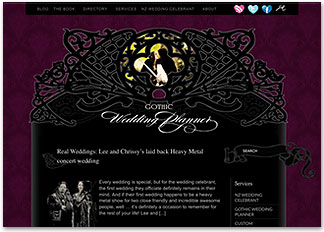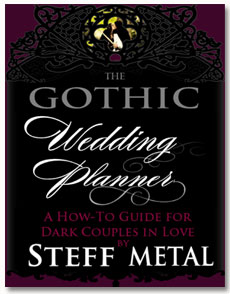How to Get Me to Your Blog and Keep Me Coming Back
By Devon Ellington
Blog, blog, blog. It starts to sound like, “Blah, blah, blah,” after a while, like those cartoons where the human stands there talking to the dog, convinced the dog hangs on every word; and the dog just hears noise.
Yet, most marketing professionals insist that writers need blogs.
I started Ink in My Coffee, my main blog, as a way to connect with friends, readers, and potential readers. I was reeling from 9/11, as a New Yorker. At a crossroads, I had to make a decision whether to embrace my full-time career working backstage on Broadway and in film/television production while writing on the side or give up working backstage to give writing full time a shot. The blog chronicled my transition from two full-time careers into full-time writing. It was a way to be publicly accountable for productivity. It was a way to explore my process in detail without using “process” as an excuse to procrastinate. It was a way to stay connected to readers and writers all over the world. It was a way to integrate my life and my writing and to see how each influenced the other.
My blog isn’t a monologue. It’s a dialogue—a place where people can discuss ideas, offer suggestions, make jokes, support, or point out flaws in a theory. Yes, I promote my books, my articles, my stories, my classes. But I explore how to create a sustainable creative life. To me, that exploration is more important than using it simply as a marketing tool. For me, it’s a connection tool—and not just a way to get people to part with their money.
Freelance writer Lori Widmer—whose blog Words on the Page offers advice, insight, and tough love to writers at all stages of their careers—says, “I visit your blog because it’s like visiting a friend over coffee. But in general, I return to blogs because there’s a personal connection with the blog owner. What keeps me there is the content—is it useful info mixed with personality, or is it drivel that’s intended to sell something?
“I have taken blogs off my blogroll and my feed when it’s obvious that the blogger is disrespecting the audience by ignoring comments, hard selling, or passing along bad or worse stolen information. One blogger I stopped following never responded to my direct questions but would answer all the ‘important’ commenters in that same comment thread. Another blogger recycles other people’s posts—rewrites them—and passes them off as her own information. Plus, she’s always screaming on her blog: big fonts, funky colors, and a buildup to information that makes you feel cheated when you realize it’s being regurgitated.”
Marilyn Allen, of the Allen O’Shea Literary Agency, points out that highly-regarded blogs with ever-growing traffic share the following: “Interesting writing and regular content.” And blogs that fall short of the mark also share something: “Heavy-handed selling and trite comments instead of energizing content.”
Lori and Marilyn cut right to the quick of it. Here are some tips to help you decide whether blogging is right for you and how to create a blog that generates interest and builds an audience.

“I return to blogs because there’s a personal connection with the blog owner.”
(Photo: Lori Widmer)
Have Something to Say
Common sense, but thousands of blogs are “yap-yap-yap” without actual content. Why do you want to write a blog? What’s unique about your perspective on any given topic? Why would anyone with millions of blog choices decide to read yours? Not everything has to tie in with your latest book or the upcoming book or the book you want to write next. Writers tend to talk a lot about process, interview other writers, read a lot, and try to avoid the dreaded writer’s block. They also get to do interesting things in the course of research—that’s worth blogging about. I love reading about someone who finds a handwritten diary in a dusty attic or spends hours pouring over boxes of letters in an archive. I’ll keep coming back. The blog can have variety; it can grow and change over time, growing as you do. But have something to say.
We all need to naval-gaze sometimes or share sadness or rant. But as Lori mentioned above, if I feel like you’re screaming at me all the time or that my visit imposes on you, I’m not coming back.
If you don’t have something to say or if you feel talking about your writing while you write hurts the final book, don’t blog. Not having a blog is a valid choice. There are other marketing and promotional venues open to you.
Post Regularly
If I’m going to make your blog a regular stop in my day or my week, I want to know that there will be fresh content. If I know you only blog twice a month, great, I’ll only come by twice a month. If you say you’re going to blog three times a week and then you don’t blog for six months without explanation, chances are you’ve lost me for good. We all need breaks. If you’re going on vacation, taking a leave of absence, or just need time off to re-think your life, post that you’re taking time off from blogging. When the time is up, check back in and let us know if you’ll be back or not. Don’t court readers and then abandon them.
And don’t ever tell me that you “don’t have time” to blog. As writers, blogging is part of our work day—should we choose that venue. If I make the time to come to your blog and you tell me you “don’t have time” for me, that’s a slap in the face. It’s disrespectful and telling me that you believe your time is worth more than mine.
If you need to take time off, do so. But don’t do it in a way that insults your readers.
Clean Copy
As a writer, you should be well-versed in grammar, spelling, punctuation, and structure, or at least working on it. Your blog is part of your public persona, your “Public Booklife” as Jeff VanderMeer refers to it in his wonderful Booklife: Strategies and Survival Tips for the 21st Century Writer. You want to be as polished and professional as possible.
Minimize Hoop-Jumping
Are you really so important that you need six tiers of vetting before someone can post a comment? Highly doubtful. Don’t make me “sign up,” so I can leave a comment. Don’t expect me to pass several different types of spam filters. It’s easy to put in a spam blocker and delete spam that sneaks through without forcing your readers to waste twenty minutes to leave a comment. Don’t automatically add me to your mailing list just because I stopped by your blog once. If I want to be on the list, I’ll sign up.

“I set aside a certain amount of time each week to visit new-to-me blogs, and some of those become regular stops.”
To Have a Friend, Be a Friend
Bloggers whine about lack of traffic. How often do you visit other blogs? Comment on them? Commenting builds relationships. There are days when I get very few comments; but I check the stats, and I’ve had a lot of traffic. If those people dropped a comment, I would have visited back and left one for them, too. When someone leaves a comment, visit back. I set aside a certain amount of time to visit those on my blogroll, continuing to build relationships. If someone I virtually know has a success or a milestone, I give that person a shout-out. I set aside a certain amount of time each week to visit new-to-me blogs, and some of those become regular stops. Don’t start the “no time” whine—it’s part of your job as a writer to get out there and network. Make the time.
“Being a friend” also means not insulting me on my blog. Don’t leave a link to something you’re selling, while pretending you’re a legitimate reader. Don’t tell me my blog sucks, and I should pay you to fix it (especially if your comment is full of typos). If you disagree with something I said, respectfully make your point and make sure you have the facts to back it up. I’m clear when what I say is opinion and what I say is sourced, and I back up my information. Do the same. I’m happy to have a civilized conversation.
In the end, blogging is about giving readers a chance to know the unique, wonderful person you are—without completely exposing the parts of your life and work you need to keep yours. Think of it as morning coffee with colleagues or appetizers and cocktails after a long day. Think about how what you have to say makes a difference in the wider, international conversation.
Tips to Drive Traffic to Your Blog Today (And Some Cautions)
Visit Other Blogs and Leave A Comment
Every day for the next two weeks, visit three new-to-you blogs and leave a comment. Revisit the previously visited blogs regularly and keep leaving comments. The same day or within three days, you will start receiving comments from your newly-found colleagues. If you don’t, it’s a good sign it’s not a blog worth retaining. How do you find them? Do a Google search for your interest + “blog,” and you’ll find them. Or check out the blogs listed in other bloggers’ sidebars. If you belong to a Yahoo loop (such as one of the Romance Writers of America (RWA) loops, Savvy Authors, Muse Online, or a publisher-specific loop), bloggers list their latest posts, and it’s a good way to find terrific blogs to follow. You follow someone else, chances are they’ll return the favor!
Join a Blog Carnival—Or Start One!
A “blog carnival” is a group of bloggers all blogging on a topic or a theme, each taking a scheduled turn on their own individual blog, but visiting everyone else in the carnival’s blog to leave a comment during the run of the carnival. The host blog’s regular readers often follow “their” bloggers on carnivals, but often also explore the other bloggers who particiapte in the carnival. If you can’t find one to join, start one! It does take time and organization skills; but if you make it fun, it will pay off in long-term traffic. Don’t forget to cross-promote on social media!
Join a Group Blog—Or Start One
This is a bigger commitment than the carnival. Each invidivual in the group commits to a particular day of the week or day of the month (if the group is big enough) and regularly posts on the committed day. You can write ahead of time and schedule posts, but you don’t get to forget about it or “run out of time”—it’s a regular deadline.
You also need to visit the blog on your “off” days and post comments to support the colleagues in your group. You can do this in addition to your regular blog (I do), or this can be the only place you blog. Some examples of successful group blogs by writers include: The Writers Vineyard, The League of Reluctant Adults, The Muffin, and Petit Fours and Hot Tamales. The Writers Vineyard is a group blog of writers with Champagne Book Group (a publisher); and on the author loop for the publisher, they post when a space opens up.
Some group blogs accept guest bloggers. Do your research; and if you’re willing to make the commitment, do it. Of course, you can always start a group blog for the authors from your publisher if yours doesn’t have one yet.
Guest Blog or Interview
Many review sites also do guest blogs or interviews, including the big ones, like Long and Short Romance Reviews, and many small, individual reviewers do, too. Not all of them require a free book in order to do an interview (although if you want the review, you’ll need to provide one). Read what types of books they review and what types of authors they host. Most of them will have request guidelines. Send them a pitch along with your media kit (and in this day and age, you should have a media kit). The interview should include links to your regular blog and/or website and publisher, thereby driving traffic to your blog if people want to learn more about you (although you will still have to promote your appearance on social media). These sites have regular readers, and it’s a great way to expand your audience.
Blog Networks
These are on a downward trajectory, and be very, very careful to understand the contract. Some blog networks let you join for free; some expect a fee. Some blog networks hire bloggers. Understand exactly what that individual network’s angle is before you pitch.
BlogHer still has a good reputation. I joined a few years ago and spent a lot of time on it; but in my experience, it didn’t drive any traffic back to my blog, so I stopped after about three months. The time put in did not pay off for me; others swear by it. Spend some time on the site and see if it works for you.
Contests and Giveaways
When you guest on someone else’s blog, they will often ask you if you want to give something away. Some blog festivals/carnivals are built around a holiday theme (such as “Christmas in July” or “31 Days of Spooky”), and some of those require a giveaway. If you want to do a giveaway on your own site and can afford it, more power to you. But you still have to promote it on social media, author loops, etc. I have not found contests drive new traffic back to my blog, but they do keep regular readers happy. Whatever choice you make, don’t put yourself in debt to provide the swag.
Write Well and Post Often
It goes back to the point in the article—have something to say and post regularly. People will find you if you have engaging, well-written content, and they know that they can hop over regularly to find a new post. Using RSS feeds and automatically publicizing new posts on Twitter and Facebook will let readers know when you’ve got a new post up. Most of all, enjoy it. Blogging should be a fun part of your workday, not a dreaded chore.
***
Devon Ellington is a full-time writer, who publishes under a half dozen names in both fiction and nonfiction, and teaches writing all over the world. Her Jain Lazarus Adventures are handled by Solstice Publishing; and her romantic suspense novel, Assumption of Right (as Annabel Aidan), is out with Champagne Books. “Sea Diamond,” featuring Fiona Steele, is included in the Death Sparkles anthology, releasing in fall 2012. She’s published hundreds of stories, articles, speeches, and scripts throughout her career. Visit her blog on the writing life, Ink in My Coffee, and her website.
-----
Enjoyed this article? You may also like:
How to Attract New and Repeat Visitors to Read Your Blog
---------------------------------------------------------------

How to Sell E-books on a Niche Blog
By Steff Green

logging can be a great tool for promoting our writing and connecting with our fans. But blogging can also be a great career tool on its own, especially if you run or are thinking of running a niche blog.
I run four blogs, one based around my writing and illustration services and three of which are in small niches that cater to specific groups of people with very distinct interests. A niche blog might be a cooking blog for vegans, a blog about keeping backyard chickens, or frugal household tips. Niche blogs focus on exploring one subject in depth, and they can quickly attract knowledgeable and passionate audiences.
Many niche blogs become extremely popular. Just ask Stephanie Pearl-McPhee of Yarn Harlot (a knitting blog that gets hundreds of comments daily) or Nathalie Lussier of Raw Foods Witch, a raw foods blog. However, even a niche blog with a relatively small audience—like my Gothic Wedding Planner blog—can generate a significant income by writing and selling an e-book to go with the topic.
About My Blog: The Gothic Wedding Planner
In 2007, my then-boyfriend sort of proposed. The word proposed implies a question was asked. What happened was this: he slipped the ring over my finger while I was sleeping. I woke up at 4:00 a.m. to get a drink of water and felt the ring clink against the glass. Needless to say, neither of us got much sleep for the rest of the night!
Even alternative girls like me get excited about wedding planning. I knew our wedding was going to be quite different from the norm, so I started researching gothic and other alternative weddings to get ideas for our haunted mental asylum gothic celebration (yes, really!). Not surprisingly, there aren’t a lot of useful tips out there.
I’d caught the blogging bug in a big way, and I decided to create my own wedding blog. Only instead of being white taffeta, pink roses, and heart-shaped chocolates—it would be tattoos, black dresses, and cupcakes decorated with skulls. The Gothic Wedding Planner was born.
I found an amazing site stocking medieval wedding dresses, and I blogged about it. We agonized over ceremony readings, and I blogged about it. When we decided on our heavy metal wedding playlist, I shared it with my readers. Soon people were e-mailing me asking where they could find a certain type of dress or how to convince their parents to let them have a red wedding dress or how to politely say, “Halloween costumes mandatory,” on their invitations. I was getting featured on other wedding blogs and sites. The Gothic Wedding Planner blog had taken off!
Writing the E-book
A few months into blogging, I decided I wanted to experiment with offering some kind of product. I was constantly answering very specific questions from readers via e-mail, and it took up a lot of time. I wanted to be able to direct them to a product where they could find the answers to their questions. I thought about marketing a wedding planning guide as an affiliate, but couldn’t find one that fit my audience.
So I decided to create one.
After our wedding, I committed myself to finishing the guide in four months. I sat down and wrote five hundred words every day. I added links to all our wedding vendors and all the wonderful gothic websites we didn’t use but thought were awesome. I went through every aspect of the wedding day and wrote lists and offered ideas to help brides and grooms choose alternatives that meshed with their personalities.
Once the e-book was completed, I sent it to friends who were about to embark on wedding planning. They proofread and offered ideas and encouragement. I had my web designer whip up a cover and some buttons, and The Gothic Wedding Planner Guide was finally ready to be launched.
“I made sure to link to the e-book in every blog post I wrote.”
Marketing the E-book
In the first instance, marketing the book was easy. I wrote up a sales page, which has basically remained unchanged since 2009. I talk about how difficult it is trying to plan a wedding that’s different to the norm with parents, friends, wedding magazines, and blogs telling you the way weddings must be done. I explained the details of our wedding day and how amazing it was and pointed out that it cost about one-fourth of the price of an average wedding. I explained what the book contained and how to purchase and download it through PayPal.

I use a combination of PayPal with E-Junkie to enable automatic delivery of my e-book to customer’s inboxes. Once the page was set up, and I was certain everything was working perfectly, I announced the arrival of the e-book on my site, and there was a small rush of people at the checkout.
Next, I made sure to link to the e-book in every blog post I wrote. A lot of my traffic comes from brides looking for specific things through a Google search. They might google “red gothic wedding dress” and come across one of my articles on choosing a red wedding dress. So I add a link to the e-book, so they know it’s there if they want to buy it.
I turned my attention to marketing outside my website. I purchased some advertising on a large blog network specializing in off-beat weddings. The advertising was quite expensive but has turned out to be one of my best decisions. It paid for itself in the first forty-eight hours; and three years later, it still brings in hits and sales.
I also guest blogged on other alternative websites and wrote articles about alternative weddings for wedding directories and blogs. I pitched articles to wedding magazines and have been featured in a few. I embraced social media (mainly Facebook and Pinterest, as my readers like visual inspiration) and have been acquiring new fans and followers that way.
In the last six months, I’ve been experimenting with a new type of marketing. I have a wide network of friends who also work in the alternative industry as photographers, costume designers, cake decorators, set dressers, and event co-coordinators. We’ve been collaborating on “styled” wedding photo shoots with alternative themes—like steampunk and gothic tea party—and these are getting attention on other wedding blogs and Pinterest. This has created a lot of interest in my site and has resulted in an increase in traffic to the blog.
One to two times a year, I run a special price on the book, usually 25 to 50 percent off for a limited time. I announce this on the blog, and it results in a rush of sales for the week.
Niche E-books and Blogs: The Next Steps
After more than three years of selling this e-book online, I’ve learned a lot about self-publishing and selling a product through a blog. For me, the most vital thing I struggled with in the beginning was asking for the sale. I figured if I put the e-book out there, people would find it. But that’s not necessarily true. You need to tell people it exists and point them toward big, obvious “BUY NOW” buttons. You need to price it at a level your readers can afford.
Also, never underestimate the value of a pretty e-book cover.
So what will I be doing in the future to improve sales of the e-book? In 2011, I updated the e-book, adding more than ten thousand words in additional advice, updating old links, and polishing and editing the writing. Every person who purchased the book before the update gets a free copy of the new book. I’ll need to update again in the future and will be sending out review copies of the updated book to new wedding and gothic bloggers.
I’ll also be collaborating on more photo shoots and using sites like Pinterest to share gothic wedding images. As I’m now a registered wedding celebrant who performs ceremonies for alternative couples and I also do custom wedding portraits, I have a range of services to offer new readers to my site.
With the growth of my website and increased exposure of my brand, I’ve decided to approach publishers with a proposal for a new print wedding book. This guide, Till Death Do Us Part, is not a copy of my e-book but a brand new book that features more inspiration and practical tutorials for gothic brides and grooms. I’ve begun to shop the proposal, and so far, there seems to be an enthusiastic response!
I have been debating uploading the book to Amazon in the Kindle format but have been hesitating because of my nonfiction proposal package. I’m worried if a potential publisher sees it on Amazon, they won’t want to take on my book. I will keep this in mind for the future.
***
Creating a nonfiction e-book for a niche website can be a great way to create additional income and build exposure with a smaller audience. As I’ve found with my e-book, The Gothic Wedding Planner Guide, having a product to sell on your niche website gives readers the impression that you’re an expert, and you can help them. It’s also a great tool for finding other writing gigs, such as pitching magazines or guest blogging. And, of course, the money is nice, too!
***

Steff Green is a writer, blogger, and heavy metal maiden who travels the world stalking her favorite bands and questing after the perfect sausage rolls. She writes about heavy metal at Steff Metal; and her creative copywriting business, Grymm & Epic, helps creative business owners get their ideas off the ground. She's the author of the Grymm & Epic Guide to Blogging, which helps bloggers create engaging sites that attract like-minded followers.
-----
Enjoyed this article? You may also like:
20 Questions Answered by Ali Luke: Self-Publishing E-books to Sell On Your Blog
Selling E-books: 5 Authors Share Their Strategies
Writing a Book One Blog Post at a Time: Interview with Nina Amir
How to Promote on Pinterest